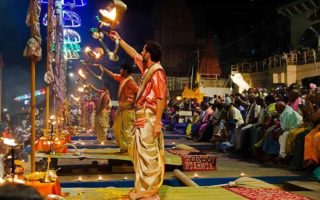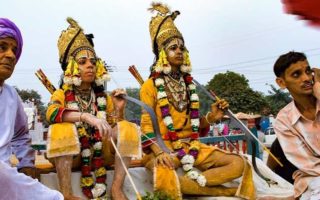Varanasi has revealed its identity across the globe for the Ghats located at every angle of the city and unquestionably it is true. There are nearly 100 Ghats and everyone has their own story of construction. Most of the Ghats were built at the time of Maratha. Series of Ghats are associated with mythological concept, some are private owned but every Ghat is subjected with holy dip In Ganga. Inner Ghats are under the 7km arc of the Ganges river shore between the convergence of ASI River in south and Varuna in north. There is a special embankment that are long side of wide stone in actual which leads down to river where every people have the holy dip. It’s believed in Hindus Purans single dip in Ganges open the doors of heaven by giving pardon to all sins.
Every Varanasi Ghat has its specific significance just have the bath at Ghats is not the specific cause to visit. Sunrise view from the boat is the speechless experience that every visitors wish to feel because the natural vibrations of Sun & Ganges can only feel through the sense cannot be describe in words. Panoramic view of nature abolish every disrupted from the mind and offers positive vibration with which the Ganges cascade and Sun rises. Evening walk at the Ghat where layers strikes with putted stone gives the inherent pleasure. People come here to consult astrologers by showing their palm and forehead and just gaze many hours of cascading Ganges. Countable Ghats are associated with specific deity while rest of others is simply for bath some most popular Ghats of Varanasi are Dashashwamedh, Assi, Manikarnika, Tulsi, Panchganga, Kedar, Mansarovar, Someshwara, Brahma, Durga, Maha Maya, Ganga Mahal, Janki, Maha Mandir, Narad and Ram Ghat etc.
Almost every Ghat is located at the river shore and neat the associated Mandir such as Rama ghat is dedicated to lord Rama located at East part of Ganges nearby Rameshwar Temple. Tulsi Ghat is dedicated to Mahant Tulsi Das who wrote the Hindu’s spiritual book Rama Charit Manas. Man-Mandir built in 1770 by the emperor of Jaipur while Lalita Ghat was built by king of Nepal at the site of Keshav temple. Dashashwamedh Ghat is situated to close side of Vishwanath temple and it is one of popular Ghat of Varanasi. Among the all spiritual city across the country doesn’t have more Ghat than Varanasi.
Dashashwamedh Ghat
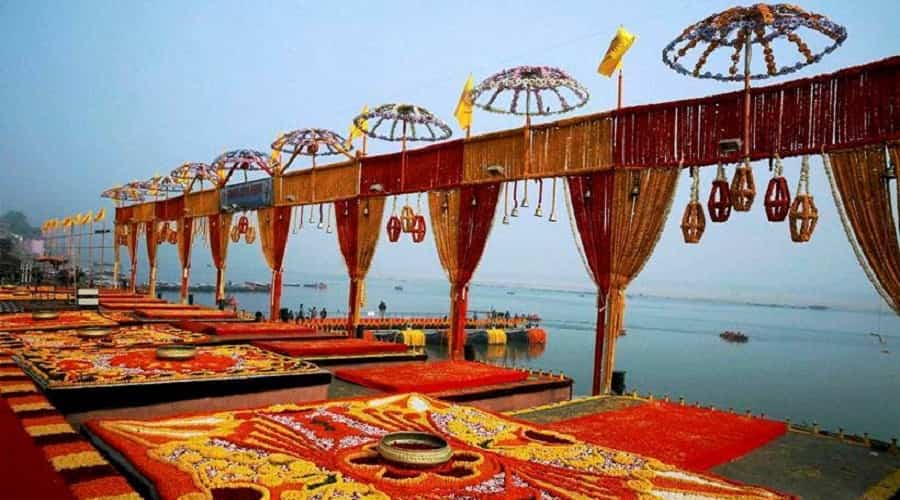
Dashashwamedh Ghat is popular among all the Varanasi Ghat reason it’s the place where Lord Brahma have sacrificed their ten horses Rath to celebrate the return of lord Shiva. Score of Sadhus can be seen here who indulge in performing their religious rituals at the Ghat. Dashashwamedh Gghat gives the colorful and stunning riverfront view that should not miss during the Varanasi visit otherwise you will regret that use missed a gorgeous nature view. Every evening Aarti take place in which thousands of lamps spread their dim light that brings a divine looks at the river dusk.
Dashashwamedh is the oldest Ghat of Varanasi and also the bustling hub of pilgrims every day score of priest, pilgrims called pandas or Purohits take the Sankalp (pledge) on their wooden Chaukies under bamboo umbrella. To perform their Sankalp ceremony they charge fee called Dakshana and people also gifts the cow to traditional Brahmins. Devotees take the dip under the Ganges after the holy dip priest splatter bather’s forehead with a red bright Tilak for the final Aarti. It’s the second Ghat that acquired the second position in Panch Tirth Yatra if you start your journey form Assi Ghat to north region. During the rainy season when Ganges achieves its full spate people comes to visit the Dashashwamedh Ghat through boat. It is easily locates because of the crowd of numerous Brahmins it could be refer as the utter most feature of the Varanasi Ghat. The place look like as the film shooting is running across the Ghat reason the natural incidents are happens under the roof the divine in the lap of Ganges. This is the best place where you can click the beautiful photographs to decorate your memorable diary. It’s the foreigner’s favorite destination where they come to click the natural beauty of Varanasi.
Harishchandra Ghat
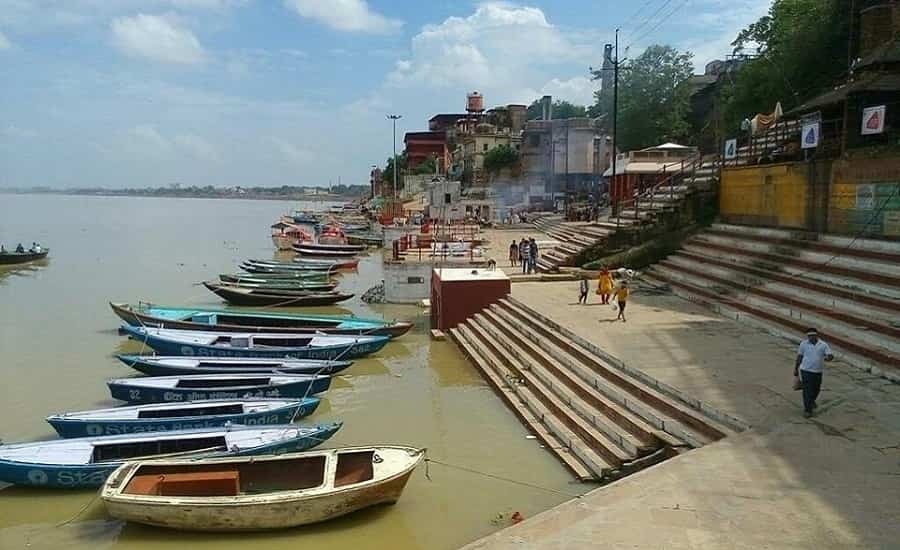
Harish Chandra was the popular mythological king who knows for their truth it believed that he never cheated or dumped any person in his whole life and serve for humanity. He never told lie he was the real priest of truth and worked at the cremation ground just for the determination of charity and truth. Even it has written in Purans that god has rewarded his dead son for his truthfulness, kind heart and charity works and Harish Chandra Ghat is the cremation destination of Varanasi and other is Manikarnika Ghat. Every day numerous Hindus from the various region of country bring their relative dead body for cremation at this Ghat. The Harish Chandra Ghat was constructed in 1980’s that time electric cremation was introduced here, it Hindu’s religion belief that whose dead body cremated at the Harish Chandra Ghat gots the Moksha and become free from the recycle of birth.
This Ghat is only famous due to the king Harish Chandra who never refused to any guest he was the real devotee of truth and even universe creator Lord Brahma told that his devotion was not that much strong but he made tougher that will not be achieve in forthcoming century. Brahma approach as the real Brahmin or priest and rewarded his entire kingdom back but the king Harish Chandra refused the proposal for the sake of truth. His wife was under the right of flower seller when his only son was died due to the snake bite and his wife brought the dead body of son where her husband worked because she had not enough money to pay the cremation fee even she ripped her half sari for the fee. Than lord Brahma arrives and gave back her son’s life and kingdom to Raja Harish Chandra and committed that this place would be known with his name.
Manikarnika Ghat
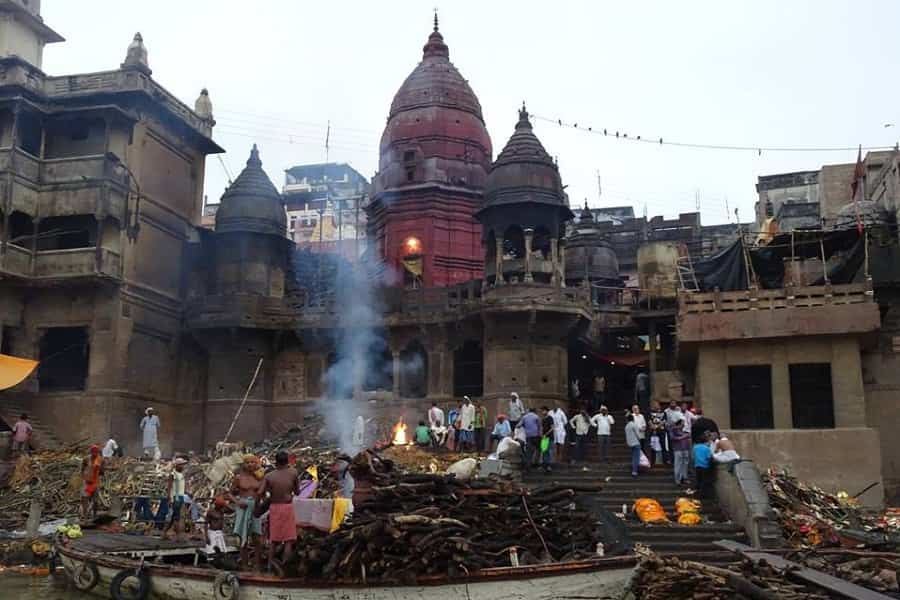
According to the Hindu mythology Manikarnika Ghat is the most revered place where the person get Moksha in simple words it can be defines as the one become free from the re-cycle of birth in this universe. As the myth received God Vishnu created the Manikarnika Ghat and the fairy story behind its creation is; Vishnu did Tapasya (an individual effort to make god happy) to please the Lord Shiva. He wanted to save Kashi from the Shiva distortion so he was trying to convince him when lord shiva was going to destroy the world. When lord Shiva pleased by Vishnu efforts than he placed his feet on Kashi’s land along with spouse Mata Parvati Devi and granted Vishnu’s wish. Vishnu was the lord of rain so he made a kund (well) on the shore of Ganges for the Shiv-Parvati bath and during the bath a Mani (precious stone) fell into the water Kund since that time the place is known as Manikarnika Ghat.
Since it built by the lord Shiva people’s cremated on this Ghat as they bless by the Shiva and gifted Moksha a spiritual belief of Hindu’s. This Ghat exists at the centre of five Ghats and symbolize as the place of creation and destruction. At Manikarnika human body consign to flames after the prayers while the soul goes very far beyond the imagination of any living asset at their real destiny. People across the various part of the country comes here when their beloved one close their eyes or can say when they receive the invitation from the god. One who took birth in this universe has to be destroyed in this land it’s the tradition of the birth cycle it’s the message conveyed by the Lord Shiva at the time of construction of Manikarnika Ghat.
Tulsi Ghat
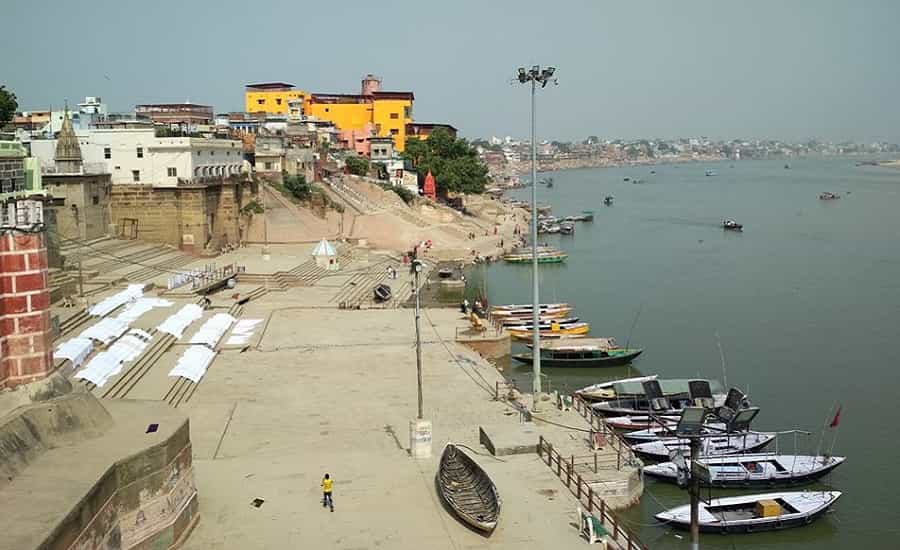
Tulsi Ghat is one of the prominent Ghat of Varanasi it’s the actual place where saint Tulsi das had written the Hindu’s most spiritual, mythological and religious Book or holy Granth ‘Ramcharitmanas’. The year was 1941 when the infrastructure was constructed by the well know industrialist Baldeo das birla and Varanasi Tulsi ghat associated with many interesting stories such as Lolark Kundra and Lolark Sasthi. It is believed that single dip of this Ghat protect the person from all kind of skin disease and every day score of Indians comes at this Ghat to take one holy dip. One most important fact about this Ghat is when the Ramcharit-Manas completed it fell into Ganges water but didn’t sink and kept cascading in the river water. The story of lord Rama was staged at this Ghat first time and to commemorate these incidents lord Rama temple was built on the divine place of saint Tulsi das.
Some residue of the saint Tulsi Das are preserved at this Ghat and location where the great soul had left the Tulsi Das body has been conserved as their Samadhi Sthal along with Rudraksha, dogs, idol of Hanuman and the pillow with which Tulsi das worshipped are integrated here. Tulsi is also the name of holy plant that can be seen here and where Tulsi Das daily wrote the Ramcharitra-Manas was in the lap of Tulsi. Score of trees are planted at this Ghat where devotees give homage to the Saint Tulsi Das by pouring river water on the root of tree. A stag play is performed by the local artist called Ramleela at the time of Vijayadashami it was that day when Lord Rama got the win over the enemy of humanity Ravana.
Assi Ghat
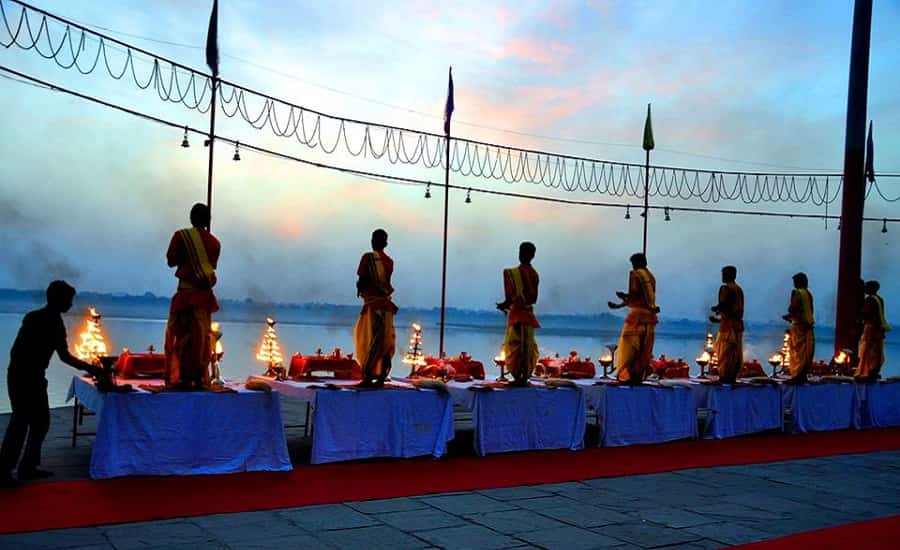
Assi Ghat is located at the southern region of the Varanasi and every year score of foreign students, tourist, researcher and photographer come to visit this Ghat. Assi Ghat has the upper rank among the series of popular Ghat that often visited for amusement activity during the festival ceremonial festivals. Generally 300 people come per hour at this Ghat every morning but on special occasion it extends to more than 2500 people in number per hour. The accommodation of the Ghat is 22,500 at a time but some time it go beyond it especially on Shivratri. Score of Israeli militaries after their mandatory services visit this Ghat and as they are connected with the Jewish community at Assi Ghat.
Assi is the clay-blanked surface Ghat where Assi rivers meets with Ganges, this Ghat comes at the first number if you start journey from the southern part towards Manikarnika. It’s believed that one dip in Assi River is mandatory for every visitor before the worship that happens under Hindus Spiritual tree Peepel. Lord of the confluence of the Assi so called Asisangameshvara has placed in a marble covered surface just near to the Assi Ghat. There is long held tradition in Hindus where pilgrims visit Lolark Kund next to the Assi visit, in actual Lolark Kund is the rectangular tank ‘ trembling sun’ kund that is 15 meter below the ground surface. According to information collected by the pundits this tank has abandoned and only alive during the Lolark fair after the thousands of prayers. It has considered as the one sun site among the two which is related to the Hinduism origin on this earth and the existing place in old site of Varanasi. This Kund is equated through the 12 divisions of the sun that is attraction point of pilgrims which start on Buddha Purnima.
Ass Ghat is the one of most important in five series Ghat more likely that is supposed to pilgrims bath in the traditional sequence of then ritual route known as Panch Tirth Yatra.
